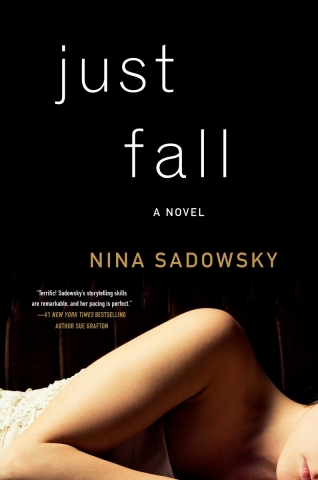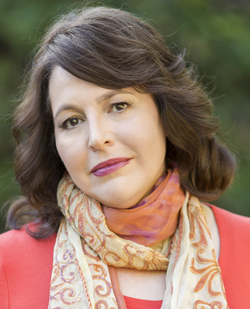
The first chapter of Nina Sadowsky's JUST FALL starts with a woman in a hotel room and a handsome, young man on the bed who just happens to be dead.
With a knife in his stomach.
"I got the idea for that from a romantic weekend trip I took with my husband. We were in a bad place in the marriage, went on the weekend to reconnect and talk out our problems. But we were really afraid to talk about them. I was watching some young men play ball on the beach and my husband was sprawled out on the bed and I thought, what if he was dead?"
But Sadowsky wanted readers to be with her heroine, and its hard to do that when you first meet her and suspect she is a killer. "So I take the reader to the next scene which is a pure moment of bridesmaids, champagne, and finding the perfect wedding dress."
The book is a metaphor for the perils and pleasures of intimacy. "One of my goals was to subvert this notion that the wedding proposal is the end. When you are married, that is where the real stuff begins."
With those first two chapters Sadowsky had an alternating structure, (between the present and moments from the past which are presented non-sequentially) that served her for the rest of the book. Sadowsky wrote and produced for films (House of Sand and Fog, The Wedding Planner, Lost Souls) for films and TV (Northern Lights with Diane Keaton, among others). "Film and TV have such rigidly codified structures. Part of the fun writing this book was to throw out all these rules. I decided to play with the structure so that the past was revealed at points that revealed character. I wanted reader to identify with this couple even if the couple was doing horrible things."
The effort worked, as an executive at Random House who read the book said to her, 'I read your book so I might learn to identify a murderer, and then I realized I need look not further than the mirror.'
The question the books asks is: where is our gray line of moral ambiguity? What line will we cross for love? Will you betray others? Will you betray yourself? "The heroine of my story is in love with a phantom. She doesn't even know his real name. How invested is she in protecting the ideal of love, the idea that true love conquers all?"
The book is the first in a planned series. And not just a book series, but a TV series. Sadowsky is putting her film and TV background to work; now she is pitching the idea for a series around Hollywood. She partnered with producer Mark Canton (300, The Spiderwick Chronicles). She's outlined eight episodes for seasons 1 and part of season two, keeping the present-and-past alternating structure of the book. "The juxtaposition of then and now tell the story, keep the tension high."

Her aim is to create an illuminated character, a kind of 'female driven Pulp Fiction.'
Does that mean she expects to write all the episodes herself, like Noah Hawley does (mostly) for Fargo or Nic Pizzolato (mostly) for True Detective? "Usually one person has the creative vision for the show. Creative and producer functions. Then there is a writers room where everyone 'breaks' (maps out the story beats) the story together. Then everyone takes something they are going to write. You need a new script every eight days for a twenty-two episode season. A new one-hour script. Then you film it like you would film a movie, then edit."
If Sadowsky and Canton succeed in making a deal, she would be the creative force behind it. But she would still want to partner with an experienced TV showrunner. "I'm smart enough to know what I don't know, so I would need someone with experience in this area. Someone to share the load with."
Her next novel is a stand-alone novel, The Burial Society. The new book also has an alternating story structure. It's divided into sections of convergence and origins. "It's about a woman who runs a witness protection service in Paris, and a family shows up that she failed, where the person she was supposed to protect was killed."
The story is told from the perspective of six different characters. "It's about the nature of memory and perspective. The subjective nature of memory, of willfully not seeing what's right in front of you, the secrets we keep from ourselves. I'm look at how everyone brings their own biases, perspectives to every situation and how that shifts one's perspective."
I
